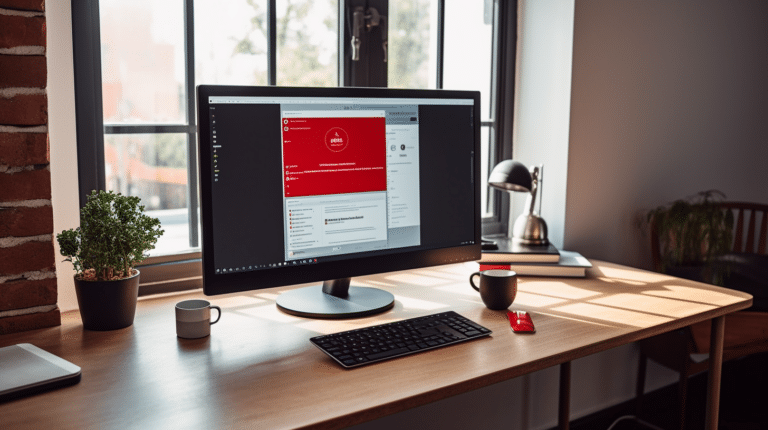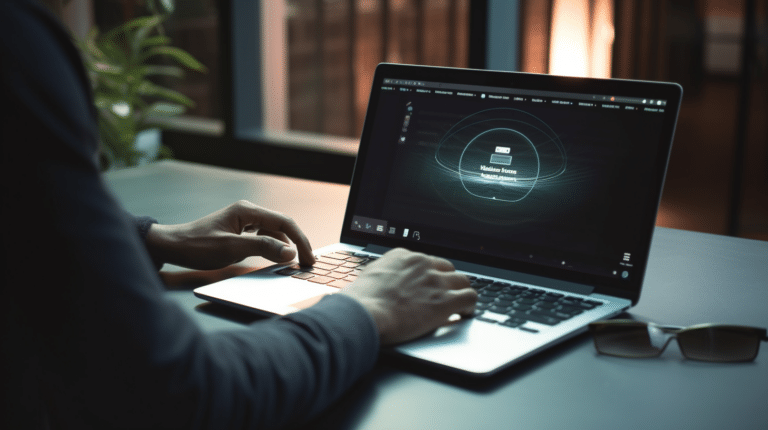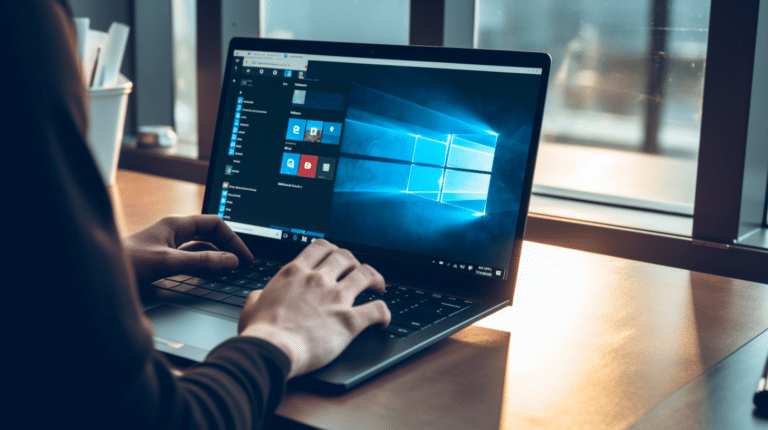IP addresses play a crucial role in our daily online interactions, serving as the unique identifier for each device connected to the internet. Understanding the different types and applications of IP addresses can provide valuable insights into their various uses and potential security concerns. In a world increasingly reliant on digital connectivity, it becomes ever more critical to grasp the significance of IP addresses and their impact on cybersecurity, data privacy, and the internet as a whole.
From identifying individual devices and enabling network communications to determining geographical locations and assisting in digital forensics, IP addresses are versatile and vital components of the online ecosystem. However, the power of IP addresses also presents privacy and security risks, as they can be vulnerable to hacking and exploitation. By taking steps to protect oneself and one’s devices, users can minimize these risks and enjoy a safer online experience.
Key Takeaways
- IP addresses are essential for successful internet communication, device identification, and geolocation tracking.
- The multiple applications of IP addresses also raise privacy and security concerns, making cybersecurity and personal protection crucial.
- Understanding and managing IP addresses can help users safeguard their online experience and minimize potential vulnerability to digital threats.
Understanding IP Addresses
An IP address is a unique numerical identifier assigned to each device connected to a computer network that uses the Internet Protocol (IP) for communication. There are two types of IP addresses primarily in use today: IPv4 and IPv6.
IPv4 is the fourth version of the Internet Protocol, which operates using 32-bit addresses. These addresses are usually represented in decimal notation, separated by periods (e.g., 192.168.1.1). Each of the four parts is also known as an octet, as it consists of 8 bits. IPv4 supports a maximum of around 4.3 billion unique addresses, but due to the rapid growth of the internet, the number of available addresses has become limited.
To overcome the limitations of IPv4, IPv6 was introduced. This version utilizes 128-bit addresses, allowing for a significantly larger number of unique addresses. In IPv6, addresses are represented in hexadecimal notation and separated by colons (e.g., 2001:0db8:85a3:0000:0000:8a2e:0370:7334). The increased length and complexity of IPv6 addresses enable better scalability, security, and performance.
IP addresses serve two primary purposes: they identify a host or network interface and provide a location for the host within the network. They are essential for devices to communicate with one another, as they allow the devices to route data to the correct destination. Public IP addresses are accessible from the wider internet, while private IP addresses are only accessible within the local network.
In summary, IP addresses play a crucial role in internet communication by uniquely identifying devices and enabling data routing. Both IPv4 and IPv6 have specific characteristics and notation formats, allowing for varying degrees of address availability and functionality.
Types of IP Addresses
IP addresses are crucial for communication across the internet. It’s essential to understand that there are different types of IP addresses, each with its distinct characteristics and uses. The two primary categories are public IP addresses and private IP addresses, which can further be divided into static or dynamic IP addresses.
Public IP Address
Public IP addresses are globally unique and assigned by the Internet Assigned Numbers Authority (IANA). These addresses are used for devices that need to communicate over the internet, such as routers and web servers. Public IP addresses can be static or dynamic:
- Static IP addresses: remain constant over time and do not change. They are essential for services that require a consistent and easily identifiable address, such as hosting a website or running an email server. Static IP addresses are generally allocated by an internet service provider (ISP) and may incur additional costs.
- Dynamic IP addresses: on the other hand, can change periodically. They are assigned by a Dynamic Host Configuration Protocol (DHCP) server, typically managed by an ISP. These addresses are suitable for most residential customers and small businesses that don’t require a fixed, public IP address. Dynamic IP addresses are generally more cost-effective and easier to manage.
Private IP Address
Private IP addresses are reserved for use within private networks, such as home or office LANs. These addresses are not routable over the internet, allowing for separate and secure communication within a local network without exposing devices to the public internet. Private IP addresses can also be static or dynamic:
- Static IP addresses: are manually assigned to devices within the private network and remain fixed unless changed by an administrator. These addresses are useful for servers, printers, or other devices that require a consistent address within the private network. Assigning static IP addresses involves careful planning to avoid address conflicts and efficiently utilize available address space.
- Dynamic IP addresses: are automatically allocated by a DHCP server within the private network. These IP addresses are often assigned with a lease time, after which the address can be reassigned to the same device or a new one. Dynamic IP addresses are convenient for most end-user devices like laptops, smartphones, or desktop computers, as they require minimal management and reduce the risk of address conflicts.
IP Addressing and Networking
IP addresses are crucial components in establishing and maintaining communication between devices in a network. They enable routers to determine the best path for data packets and help with proper network organization. This section will discuss the concepts of subnetting, network ID, and host ID, and their roles in IP addressing and networking.
Subnetting
Subnetting is the process of dividing an IP address space into smaller, more manageable subnetworks, allowing better organization and control over network traffic. It involves creating subnets by assigning a portion of an IP address range to a specific local area network (LAN). This enables more efficient use of address spaces and improved security within networks. To achieve this, a subnet mask is used to determine which part of the IP address is the network ID and which portion is the host ID.
Network ID
The network ID is the part of an IP address that uniquely identifies a specific network within a larger internet environment. In combination with a subnet mask, it helps routers and other network devices determine if the destination IP address is within the same LAN or if it belongs to another network, which requires routing through a gateway. The network ID is typically the initial segment of an IP address, with the remaining bits being the host ID.
Host ID
The host ID is the portion of an IP address that uniquely identifies a specific device or host within a network. Together with the network ID, it forms the whole IP address and ensures that each device has a unique identifier within its LAN. Host IDs are assigned by network administrators or automatically through Dynamic Host Configuration Protocol (DHCP) within a specific IP address range.
In summary, IP addressing and networking concepts such as subnetting, network ID, and host ID are essential in managing internet communication and organizing networks effectively. By employing these principles, network administrators can optimize resource allocation, enhance security, and improve overall network performance.
How Internet Service Providers Use IP Addresses
Internet Service Providers (ISPs) like AT&T play a crucial role in managing and distributing IP addresses. These entities assign IP addresses to their subscribers and maintain the necessary infrastructure for internet connectivity. In this section, we will discuss how ISPs use IP addresses to provide services and manage their networks.
Firstly, ISPs allocate a unique IP address to each device connected to their network. This allows them to track your device’s online activity and manage the type of content it can access. IP addresses also enable ISPs to provide a seamless browsing experience by ensuring data packets are appropriately routed between the user and the server hosting the desired content.
ISPs also use IP addresses for network management purposes. Through IP address monitoring, providers can optimize their network’s performance by identifying bottlenecks and areas requiring improvement. Additionally, ISPs hold onto records of their subscribers’ IP addresses as part of their legal obligations to maintain activity logs, which may be used to assist law enforcement in criminal investigations if necessary.
Another critical aspect of IP addresses management is ensuring their efficient distribution to prevent depletion. ISPs coordinate with organizations like the Internet Assigned Numbers Authority (IANA) and Regional Internet Registries (RIRs) to acquire IP address blocks that they can then distribute to customers.
Lastly, ISPs leverage IP addresses to implement various policy controls. These can include bandwidth throttling (limiting the amount of data a user can consume) or blocking specific websites that violate their terms of service. IP addresses also help in the identification and mitigation of cybersecurity threats, such as Distributed Denial of Service (DDoS) attacks, by tracing the origin of malicious traffic.
In conclusion, ISPs like AT&T play a vital role in managing IP addresses, ensuring efficient internet connectivity for their customers, and maintaining the overall stability and security of the digital ecosystem.
Device Identification and Geolocation
IP addresses play a crucial role in identifying and geolocating various internet-connected devices, such as computers, laptops, tablets, and mobile phones. These unique numerical labels assigned to each device facilitate communication over networks and allow for location-based services and analysis.
Geolocation of IP addresses involves determining the geographical location of a device connected to the internet. This process takes advantage of databases and algorithms capable of mapping IP addresses to specific locations. Accurate geolocation is essential for numerous applications, including content personalization, fraud detection, and targeted marketing.
One of the most common methods for device identification is by using the device’s IP address. Every internet-connected device is assigned a unique IP address, which can provide information about the device itself, the internet service provider (ISP), and even the user’s approximate location. IP addresses can be either public or private, with public IP addresses being accessible over the internet, while private IP addresses are reserved for internal network use.
Device identification and geolocation techniques have evolved alongside advancements in technology. With the increase in mobile phones’ usage, especially on 3G and 4G networks, geolocating IP addresses has become more accurate and reliable. This capability is particularly relevant in addressing security concerns, such as fraud detection and access control, where device and user identity are crucial to maintaining a secure environment.
The accuracy of geolocation can be influenced by various factors, such as the ISP’s management of its IP address allocation and the device’s GPS capabilities. However, it is essential to note that IP-based geolocation is not always precise and should be employed in conjunction with other techniques, particularly when dealing with sensitive or critical applications.
In summary, IP addresses enable device identification and geolocation, proving to be vital for various applications ranging from content personalization to security. As technology continues to advance, the effectiveness of these methods in identifying and locating internet-connected devices like computers, laptops, tablets, and mobile phones is expected to improve, providing more accurate and reliable solutions for both businesses and users.
Protecting Your Online Privacy and Security
Using a VPN
A Virtual Private Network (VPN) is a powerful tool for protecting your online privacy. By creating an encrypted tunnel between your device and a secure VPN server, your internet traffic is hidden from prying eyes. This makes it difficult for third parties to monitor your data, ensuring that your privacy is preserved.
There are many VPN services available, such as NordVPN, that offer various features and user experiences. Some benefits of using a VPN include:
- Masking your IP address, making it difficult for websites and online services to track your browsing habits
- Bypassing geographic restrictions on content
- Protecting your data on public Wi-Fi networks
Firewalls
A firewall is a crucial component of any online security strategy. Firewalls act as a barrier between your internal network and the internet, monitoring and controlling incoming and outgoing traffic based on predefined security rules.
There are two types of firewalls:
- Hardware firewalls: These are physical devices, often integrated into routers, that protect your entire network from external threats. They are typically more robust and offer better performance than software firewalls.
- Software firewalls: These run on individual devices and can be customized to suit your specific needs. They offer greater control over individual applications but may require more maintenance.
Routers
Routers play a significant role in maintaining your online privacy and security. They act as the gateway between your home network and the internet, managing all network traffic. To enhance your online privacy, it is essential to select a secure router and properly configure its settings. Some key steps to optimize your router’s security include:
- Changing default login credentials to prevent unauthorized access
- Enabling WPA3 or WPA2 encryption to secure your Wi-Fi network
- Regularly updating firmware to fix security vulnerabilities
- Disabling remote management to prevent unauthorized access from the internet
- Setting up a guest network for visitors, isolating their traffic from your main network
By considering the above precautions and utilizing VPNs, firewalls, and secure routers, you can significantly enhance your online privacy and security, safeguarding your personal data from potential threats.
IP Addresses and Hacking
IP addresses play a significant role in the world of hacking. Cybercriminals use a variety of techniques to exploit IP addresses and gain unauthorized access to systems or steal information. In this section, we will discuss some common hacking techniques and how to protect against them.
Common Hacking Techniques
1. Malware Injection: Hackers can use IP addresses to target specific systems and inject malware, such as viruses, worms, or Trojans. Once inside, malware can spread throughout a network or system, compromising data and causing harm.
2. DoS (Denial of Service) and DDoS (Distributed Denial of Service) attacks: By overwhelming a target IP address with an influx of traffic, hackers can render a system or network unusable. A DoS attack originates from a single source, while a DDoS attack uses multiple compromised systems to amplify its impact.
3. Phishing Attacks: Cybercriminals often deceive victims into clicking on malicious links or providing sensitive information (such as login credentials) by posing as a trusted source. Phishing attacks commonly use spoofed IP addresses to make their messages appear legitimate.
4. Unauthorized Access: Hackers may exploit vulnerabilities in a system or network to gain access to a target IP address. This can involve social engineering tactics, such as tricking employees into revealing sensitive information or bypassing security measures.
Protecting Against Unauthorized Access
To defend against these hacking techniques, it’s essential to implement protective measures:
- Keep software up-to-date: Regularly update all software, including operating systems, applications, and security tools. This helps to ensure that known vulnerabilities are patched and your systems are less susceptible to attacks.
- Use firewalls and intrusion detection systems: Implement network security tools like firewalls and intrusion detection systems (IDS) to monitor and restrict incoming and outgoing traffic based on predefined security rules.
- Implement strong access controls: Ensure that only authorized users have access to your systems, and limit their privileges according to their roles and responsibilities. Strong password policies, multi-factor authentication, and the principle of least privilege are all crucial for maintaining secure access controls.
- Educate employees: Train employees on cybersecurity best practices and how to recognize potential security threats, such as phishing emails or social engineering tactics. Regularly update their training to keep up with evolving threats.
- Regularly monitor and audit network activity: Regularly review logs and network activity to detect any unusual or suspicious activities that might indicate unauthorized access or an attack in progress.
By adopting these best practices, you can significantly reduce the likelihood of experiencing a security breach due to IP address-related hacking attempts.
Monitoring and Controlling Internet Activity
IP addresses play a crucial role in managing and controlling internet activities across networks. Network administrators and cybersecurity professionals often use IP addresses to monitor data traffic, ensuring seamless and secure online communications.
One primary use of IP addresses is for traffic monitoring. By observing the flow of data between IP addresses, network administrators can identify patterns and trends in internet usage. This information helps identify potential bottlenecks, allocate bandwidth resources more effectively, and maintain overall network performance. For instance, administrators can use monitoring tools like Botnet detection by monitoring group activities in DNS traffic to eliminate fake IP addresses and improve the reliability of their networks.
IP addresses can also be utilized to control online activity, allowing network administrators to block or allow specific IP addresses or ranges. This mechanism helps create a secure network environment by restricting access to potentially harmful websites or services, protecting end-users from malware, phishing, and other online threats. Moreover, controlling IP addresses can be useful in enforcing company policies or legal regulations related to the usage of certain online services.
In addition to security purposes, IP addresses often serve as a foundation for traffic shaping or Quality of Service (QoS) control. By monitoring and controlling individual IP addresses, network administrators can prioritize specific types of data or applications, ensuring that critical resources are always available. For example, an organization might prioritize video conferencing software over casual web browsing, guaranteeing optimal performance for essential communications. A tailor-made process like the one mentioned in Monitoring and controlling QoS network domains can be used for this purpose.
Lastly, IP addresses are crucial in network troubleshooting scenarios. When connectivity issues arise, network administrators can use IP addresses to pinpoint the root cause, adjusting configurations or addressing issues in hardware or software. Moreover, being able to trace IP addresses behind VPNs or proxy servers can help in determining the exact source of a problem, as explained in Tracing IP Addresses Behind VPN/Proxy Servers.
In conclusion, IP addresses serve as the backbone for monitoring and controlling internet activity in various ways. From managing data traffic to securing networks, understanding and properly utilizing IP addresses enable smoother and more efficient online experiences.
Addressing Cybersecurity Vulnerabilities
Addressing cybersecurity vulnerabilities is crucial in the digital era, as various platforms like Windows, iOS, and Android are susceptible to potential attacks. One method to enhance cybersecurity is by working with IP addresses and understanding the possible risks associated with them. In this section, we will discuss some ways that IP addresses can help in addressing cybersecurity vulnerabilities.
Firstly, monitoring IP addresses is essential in detecting potential threats. By keeping an eye on incoming traffic and the source IP addresses, it is possible to identify any suspicious behavior. This can help filter out traffic from malicious users and prevent potential attacks. Additionally, monitoring IP addresses can also help discover vulnerabilities in a network and provide insights on how to fix these weak points.
Another way of addressing cybersecurity vulnerabilities using IP addresses is IP blocking. By blocking potentially malicious IP addresses, you can limit access from known threats. This is an effective measure for minimizing potential security risks, and it is commonly used in combination with firewalls and intrusion detection systems. Additionally, IP blocking can be implemented across various platforms, including Windows, iOS, and Android.
Geo-blocking is another method to enhance cybersecurity. This technique involves blocking IP addresses based on their geographical location, which can be useful in preventing attacks from specific regions known for cybercrime activities. This approach allows organizations to focus on addressing potential threats from specific countries, which can help reinforce security measures.
Network scanning and penetration testing are other techniques that involve IP addresses to secure a system. Scanning tools, such as Nmap, can be used to check specific IP addresses and identify potential vulnerabilities. Penetration testing tools can then be employed to assess the security of a system and implement fixes as needed. These tests can be performed across various platforms, including Windows, iOS, and Android devices.
In conclusion, IP addresses play a significant role in addressing cybersecurity vulnerabilities. By monitoring, blocking, and scanning IP addresses, organizations can secure their digital platforms, thus minimizing risks for users.
IP Addresses in Media Streaming and Torrenting
IP addresses play a crucial role in media streaming and torrenting processes. In both cases, the IP address serves as a unique identifier that allows devices to establish direct connections for content delivery. Streaming services and torrenting platforms rely on the users’ IP addresses to route data packets efficiently, ensuring a smooth media streaming experience or torrenting downloads.
Media streaming services like Netflix, Hulu, and YouTube use users’ IP addresses to establish connections to their servers and deliver content. These platforms typically require users to have a valid IP address for accessing specific content libraries based on regional restrictions. For example, a user with a US IP address will have access to different shows and movies from a user with a UK IP address due to licensing agreements and geo-restrictions.
BitTorrent, a popular peer-to-peer file-sharing protocol, relies on IP addresses to create a decentralized network for distributing content. In a BitTorrent network, users share files by breaking them into small pieces and distributing them to peers connected to the same swarm. Each peer in the swarm has a unique IP address, which allows them to send and receive data directly with one another. The BitTorrent protocol includes a peers list that contains the IP addresses of all participants in a torrent swarm, making it easy for users to connect and exchange file chunks.
Torrenting poses some privacy and security concerns due to the direct connections between peers and the public visibility of IP addresses. As a result, some users resort to anonymity tools, such as Virtual Private Networks (VPNs) or proxy servers, to hide their IP addresses while engaging in torrenting activities. These tools encrypt the users’ traffic and route it through remote servers, effectively masking their real IP addresses.
To sum up, IP addresses are critical for enabling seamless media streaming and efficient torrenting experiences. They help establish connections between devices and facilitate content delivery through innovative sharing methods, such as those used in the BitTorrent protocol. However, users must also be aware of the privacy implications and potential legal ramifications associated with sharing content using torrents, as their IP addresses can be visible to other users and even monitored by third parties.
Tracing Digital Footprints Through IP Addresses
Internet Protocol (IP) addresses are numerical labels assigned to devices connected to a computer network. They play a crucial role in tracing digital footprints as they provide a unique identifier for each device accessing the internet. By analyzing IP addresses, it is possible to gather information about users’ activities, including their online behavior, websites they visit, and in some cases, their geographic location.
One common use of IP addresses in tracing digital footprints is identifying the name and email address associated with a device. When users sign up for a service or create an account on a website, their IP address is often logged by the service provider. If a user happens to use the same IP address when signing up for multiple services, it becomes possible to link these accounts together and form a digital footprint.
In addition to names and email addresses, phone numbers can also be associated with IP addresses. Some mobile applications require users to provide their phone numbers during registration. As these apps communicate with servers over the internet using IP addresses, it becomes feasible to link the phone number to an IP address, thereby expanding the digital footprint.
Geolocation data from GPS-enabled devices can further enhance the digital footprint analysis. As users access the internet on their mobile devices, their IP addresses can be correlated with GPS coordinates. This information can be used to determine a user’s physical location or to identify patterns in their movements.
Social media platforms are a valuable source of information when it comes to tracking digital footprints. With users posting personal content and engaging with others, IP addresses can be utilized to link various social media profiles together – even if they were created under different names or email addresses. This provides a clearer picture of a person’s online presence and habits.
IP addresses can also be used to uncover personally identifiable information (PII). This may include data such as a user’s home address, birthdate, or even financial information, depending on the services they have accessed. However, it is important to note that not all IP addresses can be directly linked to PII, as many users access the internet through shared or dynamic IPs, which offer a level of anonymity.
In conclusion, tracing digital footprints using IP addresses is a powerful method for understanding users’ online behavior, identifying connections between various accounts, and potentially uncovering sensitive personal information. However, it is crucial to approach this practice responsibly and ethically to avoid privacy infringements and ensure that collected data is used for legitimate purposes.
Conclusion
In conclusion, IP addresses play a crucial role in various aspects of internet usage. They offer multiple possibilities for network administrators, businesses, and even cyber investigators, allowing them to enhance security, understand user behavior, and maintain the smooth functioning of the online environment.
One of the essential applications of IP addresses is identifying the location of users, which can help businesses personalize their online content and target marketing efforts based on regional preferences. Additionally, IP addresses provide network administrators with the necessary tools to manage and troubleshoot connectivity issues, ensuring that users have a seamless internet experience.
Furthermore, IP addresses are critical in combating cybercrime, as they can be utilized to trace malicious activities back to the perpetrator. As illustrated in “The IP address and time in cyber‐crime investigation,” IP addresses are central to identifying suspects and establishing proper cybersecurity defenses.
However, it is important to note that IP addresses may not always be entirely accurate in pinpointing user locations due to factors like VPNs, proxies, and dynamic IPs. This is particularly relevant in the context of data privacy, as discussed in the “Breyer case of the Court of Justice of the European Union.”
In summary, IP addresses hold vast potential and are integral to various online activities, whether for personalization, security, or troubleshooting. However, it is essential to use them responsibly and ethically, acknowledging their limitations and the potential consequences of mishandling.
Frequently Asked Questions
How are IP addresses utilized?
IP addresses are essential for devices to communicate over the internet. They enable the exchange of data between devices and help identify the location and identity of a given device. IP addresses are commonly used for various purposes such as website and server management, security monitoring, and targeted online advertising.
What actions can authorities take with an IP?
Authorities can use IP addresses to track and locate devices involved in cybercrimes, hacking, or online harassment. In certain cases, they may work with Internet Service Providers (ISPs) to identify the subscriber or user associated with a particular IP address. However, proving a direct connection between an IP address and a specific individual can be challenging and often requires additional evidence.
What methods exist to locate someone by IP?
There are several tools and websites available that allow anyone to perform IP-based geolocation, which can provide general information about the physical location associated with a given IP address. However, these methods typically only produce an approximate location, such as a city or region. For a more precise location, advanced techniques and cooperation from ISPs may be required.
Is it possible to trace an IP address?
Yes, it is possible to trace IP addresses to their source, which can be an internet service provider, a web server, or a specific device. Tracing an IP address can involve analyzing log files, using IP lookup tools, or working with network administrators to get more detailed information. It’s important to note that the accuracy of tracing an IP address can vary, and may not always reveal the exact location or identity of an individual behind the traced address.
Can an individual be discovered through their IP?
While IP addresses can be used to identify a device or a general location, they may not always be sufficient to discover the identity of an individual. In some cases, authorities or investigators may request user information from ISPs or websites to determine who was using a specific IP address at a given time. However, this process can be limited by privacy laws and the overall quality of the available data.
What precautions should be taken if someone possesses my IP?
If you suspect that someone possesses your IP address, there are several precautions you can take:
- Ensure that your device’s software and security measures are up-to-date
- Use a Virtual Private Network (VPN) to hide your actual IP address
- Avoid clicking on suspicious links or downloading untrusted files
- Be cautious when sharing personal information online
- If you believe that you are being targeted, report the incident to local authorities or your ISP for further assistance






